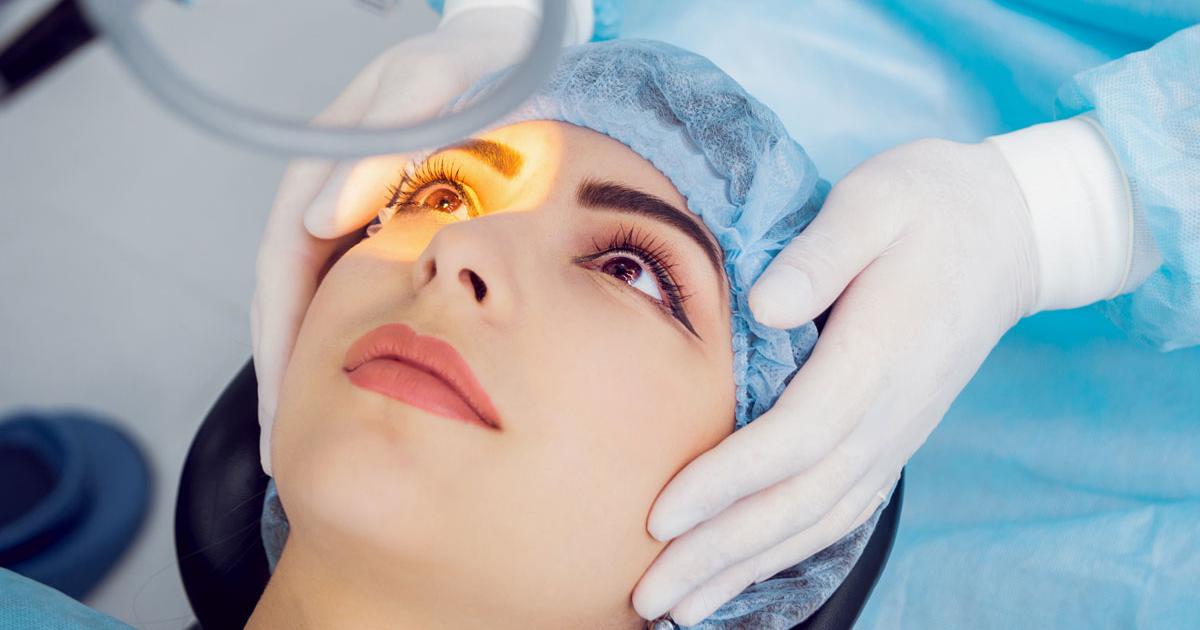Guide To Understanding LASIK Eye Surgery
Laser-Assisted In Situ Keratomileusis (LASIK) eye surgery is a type of surgery that corrects certain vision errors. Within the eye, the cornea helps focus light until an image is created on the retina. However, if the cornea or lens of the eye is irregularly shaped, the light will be focused directly in front of or behind the retina. This can lead to nearsightedness and farsightedness. The imperfections in the eye are referred to as refractive errors.
Many patients will wear eyeglasses or contact lenses to correct vision problems. They are good treatments for nearsightedness, farsightedness, and similar refractive errors that affect an individual's vision. Many patients also wear prescription glasses for lazy eyes. However, it is worth noting that eye correction can come in the form of eye surgery, include LASIK surgery. Patients may look for affordable LASIK eye surgery or other LASIK deals. Of course, individuals must understand this surgery thoroughly first.
Preparing For The Surgery

There are several important steps patients need to take when preparing for LASIK surgery. After patients have been determined to be a candidate for the surgery, their doctor will go over everything they need to do. Individuals should inform their doctor about their medical history, including any medications they take regularly or reactions they have had to medications in the past. One to two days before the surgery, patients should stop wearing makeup. Instead, they need to keep the area around their eyes clean. If debris is left in the eyelashes during the surgery, there is a higher risk of infection.
Each day for the two or three days leading up to the surgery, patients need to make sure they thoroughly and gently wash their eyes to remove makeup and other potential debris. If a patient wears soft contact lenses, they must stop wearing them at least a week before surgery and use glasses instead. Patients should also stop wearing hard contact lenses three to four weeks before the surgery. This is because contacts can cause their measurements to be imprecise, which leads to less accurate results.
Discover the details regarding the eye evaluation before LASIK surgery next.
Evaluation Before The Procedure

Patients will need to have an eye evaluation before their LASIK surgery. This is when the doctor will review the patient's medical history, including past surgeries. They will also conduct a complete eye examination and ensure that the patient is ready for the surgery. In addition to evaluating the patient's vision, doctors will also look for eye inflammation, dry eyes, eye infections, high eye pressure, and large pupils.
The doctor doing the evaluation will take time to measure the patient's cornea as well. Points of note include the shape of the cornea, as well as its thickness, contour, and if there are any other irregularities. They will also determine exactly what parts of the cornea need reshaping and how much tissue needs to be removed. Ultimately, the eye evaluation gives doctors detailed measurements and other key information about the patient's eye so that the surgery has a higher rate of success and accuracy.
Learn about how the procedure itself works next.
How The Procedure Works

A specially trained eye surgeon performs LASIK eye surgery. The first step is to create a precise and thin flap in the cornea by using a microkeratome. After that, the surgeon pulls the flap back to expose the corneal tissue underneath. The surgeon uses a laser to reshape the cornea by excising corneal tissue until the cornea is the correct shape. The pattern of the lasering is determined before the procedure to allow maximum accuracy and minimize human error.
After the cornea is reshaped, the surgeon will gently reposition the hinged flap of tissue onto the underlying tissue. There is no need for sutures. At the end of the procedure, the cornea is correctly shaped to focus light onto the retina. This means the patient will no longer need to use contacts or glasses to compensate for the refractive error within their eyes.
Continue reading to uncover the details on what patients can expect their recovery to look like next.
What To Expect During Recovery

The surgeon or doctor should talk to the patient about the recovery process and how they need to take care of their eyes following surgery. Once the anesthesia wears off, most patients experience a little discomfort. It is common for there to be a burning or itching sensation. The doctor may prescribe pain medication to relieve discomfort. Patients will need to protect their eyes from light and rest them for two to four hours following the surgery. Immediately after the procedure, patients may notice that their vision is foggy. It should become better within a few hours.
Individuals may experience increased light sensitivity, puffiness in their eyelids, tearing in their eyes, or halos around objects they look at during the night. A day or two after the surgery, patients will have an appointment so their doctor can do a vision test and make sure their recovery is proceeding correctly. Individuals will not be able to touch or rub their eyes for at least a week. However, they can shower a day after the surgery, provided that they do not get any chemicals or soap in their eyes.
Get familiar with the benefits associated with LASIK eye surgery next.
Benefits Of The Procedure

There are several benefits to LASIK surgery, which is why it is one of the most popular eye surgeries in the United States. The most obvious benefit is clearer vision. Ninety-six percent of patients say they have the vision they desire after the LASIK surgery procedure. Even if the patient's vision does not become 20/20, LASIK can still dramatically reduce blurriness. If patients do not end up with the vision they want, they can have an enhancement done to help. As LASIK surgery is done with numbing eye drops, there is very little pain during it. In addition, the discomfort following the procedure is only moderate.
When the procedure is done, patients will notice better vision within just a few hours. Patients do not need any stitches or bandages, and there is no significant downtime. In fact, they can go home the same day as the procedure. Most patients who have LASIK surgery find their dependence on contact lenses or eyeglasses becomes dramatically reduced. They may not need eyeglasses or contacts at all anymore.
Uncover the risks of the procedure next.
Risks Of The Procedure

As with any surgical procedure, LASIK does have potential risks. However, they are much lower than with many other eye surgeries. Very few LASIK surgery patients have reported having long-term or permanent problems. It is very rare for there to be complications involving a loss of vision. However, the procedure does come with side effects like temporary visual disturbances and dry eyes. The issues clear up within weeks or a few months.
LASIK surgery temporarily decreases tear production, which leads to dry eyes. Patients may also experience some difficulty seeing at night because of increased glare, halos around lights, and double vision. Some individuals may have worse vision in dim light than bright light after the surgery. Another potential issue is under correction, which causes vision to be improved but not fully. Overcorrection is also an issue. Unfortunately, this may be harder to fix than under correction.
Learn about conditions that increase these risks next.
Conditions That Increase Risks

Some underlying health issues can increase the risks associated with complications or issues from LASIK surgery. These conditions may also result in the outcome being less predictable. The conditions that can increase surgery risks include rheumatoid arthritis and other autoimmune conditions, persistent dry eyes, and a weakened immune system. The weakened immune system can increase the risks when it is weakened from immunosuppressants or the human immunodeficiency virus. Other conditions that can increase surgery risks include glaucoma, cataracts, eye injuries, inflammation of the cornea, and uveitis. Eye surgeons and other doctors may or may not recommend LASIK surgery for patients with these conditions. Each patient is evaluated based on their individual situation with these conditions.
Get the full details on who this surgery is not suitable for next.
Who It Is Not Suitable For

The previously discussed conditions increase the risk of complications from LASIK surgery. Thus, in some cases, doctors will determine that patients with them are not candidates for this surgery. In addition, it is worth noting that most doctors do not recommend this surgery if a patient's vision is unstable. This is also referred to as refractive instability and occurs when patients have had to change their prescription within the past year. This is more likely in younger patients, pregnant or breastfeeding women, and those who have fluctuating hormones because of an underlying condition, such as diabetes. Certain medications can also result in refractive instability.
Patients with dry eye syndrome are often unsuitable candidates too, as are those who have pupils that dilate more than seven millimeters in the dark and those with poor overall health. Individuals under eighteen years old are not suitable for LASIK surgery either, since their vision is still likely to change. Ultimately, a doctor will discuss whether or not a patient is a suitable candidate for LASIK surgery with them.
